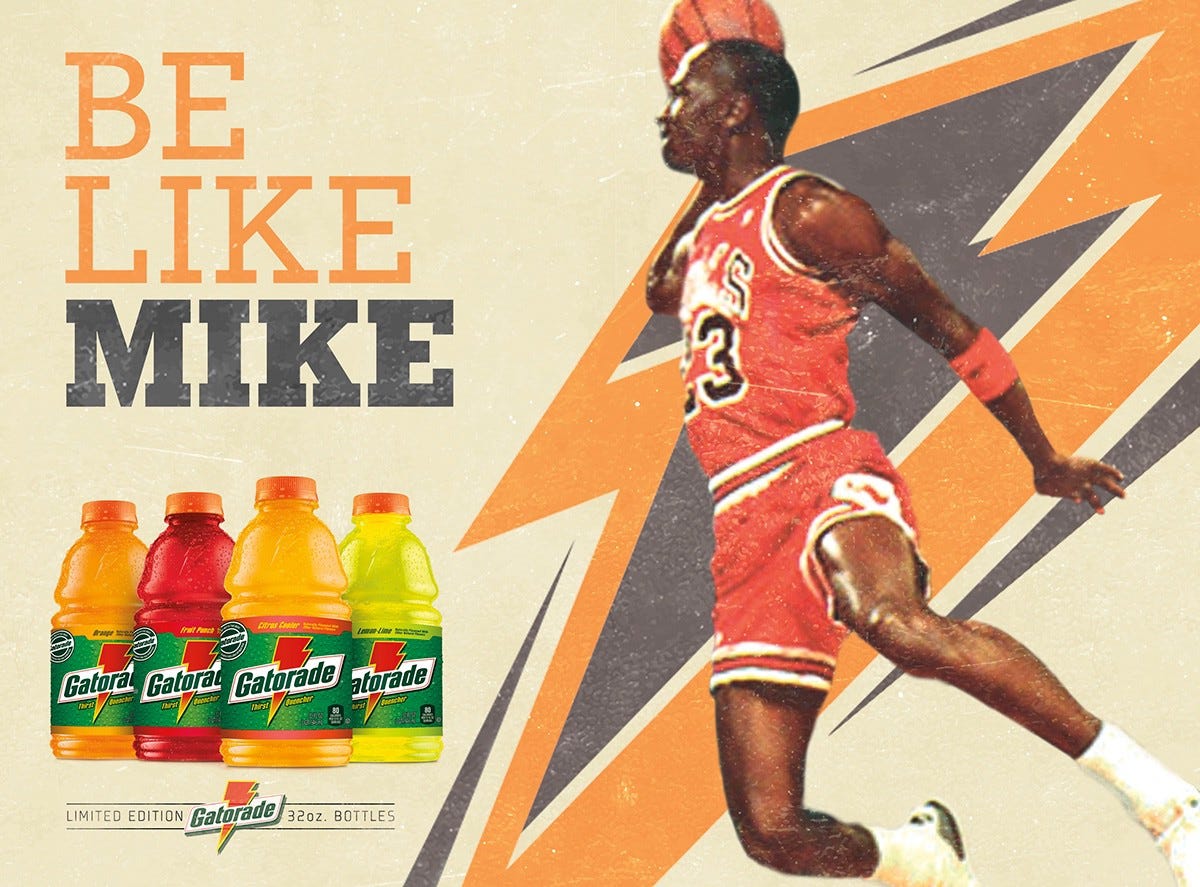Why is this interesting? - The Creativity in Sports Edition
On soccer, emulation, and styles of play
Noah here. I played a lot of soccer growing up. Not competitively, or even in high school, but like millions of Americans I spent most Saturday mornings between five- and ten-years-old running around a middle school soccer field. Nearly any time I watch soccer on TV, I think back on that experience. Mostly about how little the game I played as a kid resembles the one being played professionally. But rather than focusing on the lack of spacing and piles of kids clumping around the ball, my thoughts always wander to corner kicks.
As you’re undoubtedly aware if you’ve watched any professional soccer, corners are generally an opportunity to try and sail a ball into the box and hope one of your teammates can get a head or foot on it and get it past the goalkeeper. Around 3% of corner kicks in Europe’s top leagues end as goals. Now obviously, you can’t expect a bunch of six-year-olds to execute a flawless corner (I’m not even sure any of us would have had the power to kick the ball from the corner to the box), but the reason my mind always goes back to them is that as a kid I had never seen a corner kick executed by professionals.
In fact, I had never watched a professional soccer game. This is always somewhat shocking to me: as a kid who played soccer and was generally into sports, I never watched a match on TV. Of course, our corners didn’t reflect what European clubs were doing. We had never seen one play.
Why is this interesting?
The idea of playing anything without having seen how it really works feels like an impossibility today. It obviously would never happen with baseball, football, or basketball, which are easy to find on TV (and were even then). With soccer, the pro game has become far more popular in the United States, and matches are constantly broadcast in America. Even if you don’t manage to find one to watch live, there are an endless number of clips to watch on YouTube.
I can’t imagine many kids in America playing soccer at any level today who haven’t been exposed to the pro game. In the eighties, we were playing blind: making up the strategies and approaches as we went (to whatever extent a six-year-old soccer player has a strategy). Had we seen soccer played by professionals, I have to imagine that we would have done our best to boot the ball into the box on every corner. (Someone with kids playing soccer today can back me up or refute this.) We would have tried to emulate Messi or Ronaldo, just as every kid with a basketball pretended to be Jordan or Bo if you had a football.
Lots has changed since then. Youth sports have been professionalized to an extreme degree in the last twenty years. Parents I know are spending many thousands of dollars a year for their kids to play as part of travel soccer clubs. In basketball, the effects of the AAU circuit on development are well-documented. We are funneling kids earlier-and-earlier into a single sport in a way that might not be beneficial for their long-term athletic development. And even if kids haven’t seen a soccer game, it’s a lot more likely their coaches have today than in the 1980s.
All of this came back to me as I was listening to a very interesting conversation between basketball analysts Ben Taylor and Kyle Mann on Taylor’s Thinking Basketball podcast. Taylor is a kind-of basketball historian, producing videos and writing that tries to answer fundamental questions about the game with a perspective that extends beyond the moment. He’s currently working on a series of videos that examines the greatest “peaks” of NBA players: the run of years that history’s best players hit their highest heights. In doing the research, Taylor noticed that “at a certain point, the innovation and the differences in style, across star players, seems to get flattened more over time.” Here’s how Mann responded:
Well, I guess some of that is a phenomenon of us just having less information and sort of figuring it out. As we've gone over time, I think there's just sort of … these converging points that have made the window for what is functional within a game possible. So I think that the experimentation has just sort of been kind of choked out of the game.
Now, these guys aren’t saying it’s a bad thing (and I’m not either). Today’s players across sports are far more refined than what we had twenty or thirty years ago. It’s also not a nostalgic call for day’s past: I, without question, prefer watching the way basketball is played today. I also don’t think this comes purely down to what they watch on TV. It’s much more likely that a coach is going to sand the rough edges off a player than the player themselves.
There’s also a big difference between styles of play and the strategies and tactics used on the court or field. Even as many lament the flattening of strategies in professional sports, we’ve still seen major shifts happen in basketball and football towards better-spaced play that has made games more exciting.
But it seems like there’s something there in Taylor’s insight from looking at fifty years of basketball film. His point comes down to seeing fewer players that fundamentally break the mold in their style of play. As they point out on the podcast, if you look back at the moment basketball became truly huge in America it was when Gatorade was literally running an ad campaign urging kids to “Be Like Mike.” In the end, it’s interesting to think about how our exposure to professionals, and the emulation that follows, may end up flattening out some creativity and limiting the kinds of styles that might emerge. (NRB)
Out of Context Comic of the Day:
From friend of WITI Edith Zimmerman’s Drawing Links. (NRB)
Quick Links:
Remote Africa’s lessons in sustainability (CJN)
The complete history of first-person shooters (CJN)
Google delays its planned return to the office (CJN)
Thanks for reading,
Noah (NRB) & Colin (CJN
—
Why is this interesting? is a daily email from Noah Brier & Colin Nagy (and friends!) about interesting things. If you’ve enjoyed this edition, please consider forwarding it to a friend. If you’re reading for the first time, consider subscribing (it’s free!).




